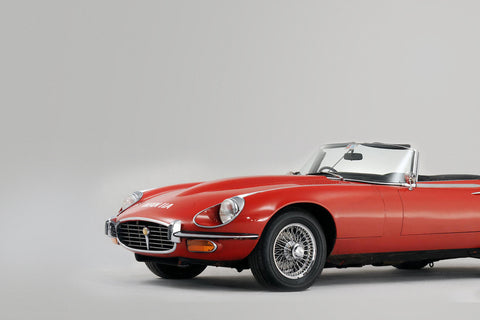This rare Heuer Monte-Carlo Timer with “Broad Arrow” features was originally developed to be a dashboard-mounted timer for rallying and other such sporting pursuits. After the Second World War, Heuer added a third to its existing duo of "Autavia" and "Hervue" dashboard timers. The Monte-Carlo is a 60-minute stopwatch, originally called the “Auto-Rallye”. Both minute hand and second hands are centrally mounted, unusual for an era that favoured subsidiary seconds.
Early examples like this one featured three buttons – separate start, stop and reset pushers – and can still be mounted to be used in the dashboard of a car. In fact, Roger W. Smith, the English watchmaker and former apprentice of Dr George Daniels, has an example fitted to his 1967 Mini Cooper. Equally, this thoughtfully designed Monte-Carlo Timer could be an attractive and tactile addition to any work desk.
If sold within the United Kingdom, this vintage Hermès Compendium will be subject to 20% VAT.
Chronographs used to time racing laps
As we leave the 1940s behind, and enter the exhilarating ‘50s and ‘60s, leisure activities start to expand; from the rise of pursuits like recreational diving, and waterproof timers developed for it, to conquering new speeds on land. Not only was racing becoming a popular pass time, but the professional side of the sport was taking off, with the likes of Formula One, the Mille Miglia and the growing passion for the Le Mans 24-hour race. To get as accurate as possible timings for these various different races, an array of chronographs were developed, from those capturing the speed of a car over a mile drag strip to those taking split timings over multiple laps.




As cars became increasingly fast, the land speed record was broken multiple times in the 1960s, with Craig Breedlove finally breaking the 600mph mark in 1965. As top speeds were gradually increasing, the margin between winning and losing a race was getting smaller and smaller. More than ever, accurate timing systems were needed to keep track of these petrol-fuelled competitions. The golden age of the steel chronograph had arrived.
Conceived as true purpose-built tools, drivers could strap on their chronograph of choice, forget about it and have it ready to use whenever the occasion arose. A specific scale, known as the tachymeter, was also designed to aid race car drivers measure their average speed over a predetermined distance, normally one mile or one kilometre. The lure of chronographs and their association with racing, quickly expanded further, partially thanks to being featured on the silver screen. Whether it was Steve McQueen, with his square-cased Monaco, or Paul Newman's eponymous Daytona, the influence of the chronograph appears inescapable.












































































































































































































